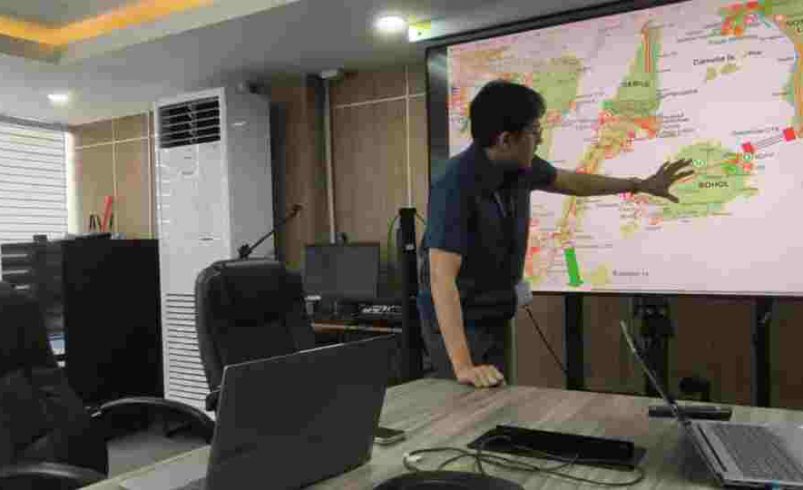Visayas grid strengthened as CNP transmission project goes live
- July 25, 2025
- 0

Department of Energy (DOE) 7 Senior Science Research Specialist Engr. Keelvin Ed Dajao explaining the details of the Cebu-Negros-Panay Backbone Project. Photo credit: PIA.gov
The Cebu-Negros-Panay (CNP) 230-kilovolt Backbone Project is now fully operational, bolstering power reliability and enabling energy exchange across key Visayas islands, the Philippine Information Agency reports. With its commissioning on March 27, 2024, the PHP 43.41 billion transmission line and submarine cable network connects Cebu, Negros, and Panay, supporting both energy security and economic activity in the region.
The project significantly upgrades the
“The CNP is a transmission infrastructure project created by the National Grid Corporation of the Philippines (NGCP) to cater to the major metropolitan areas of the Visayas, which include Metro Iloilo, Metro Bacolod, and Metro Cebu,” said Department of Energy Region 7 Senior Science Research Specialist Engr. Keelvin Ed Dajao.
Dajao added that the project is part of a broader initiative to integrate the national grid, citing the Mindanao-Visayas interconnection as a related development. “This will cater to the needs of the three major islands,” he said. “Stage three was the first to finish as early as April 2024
In Northern Negros, where underserved areas previously suffered from undervoltage issues, the benefits are already being felt. “Before, ang problema namin is the undervoltage. Ngayon, may power reliability na,” said Northern Negros Electric Cooperative (NONECO) General Manager Engr. Wilbe Bilbao.
He noted that Calatrava and San Carlos City, two NONECO areas now covered by the CNP, are fully operational. The result: fewer outages, improved voltage, and stable supply supporting both households and businesses—80% of NONECO’s consumers are residential, 20% are commercial.
“Talagang malaki ang impact dun sa economic opportunities such as construction and employment, business to local suppliers, and transport operators,” Bilbao added.
The Energy Regulatory Commission gave provisional approval to the project in 2017, pending final regulatory approval.
What’s your take on this major infrastructure milestone? Join the conversation on how expanded transmission capacity can further unlock Visayas’ power potential.
Follow Power Philippines on Facebook and LinkedIn or join our Viber community for more updates.